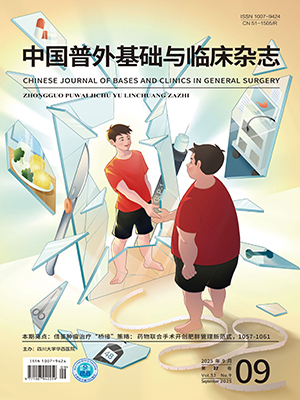Objective To investigate the clinical significance of routine application of choledochoscope during operation of biliary duct.
Methods The clinical data of 136 patients with the routine application of intraoperative choledochoscope dealing with bile duct diseases in this hospital from October 2003 to July 2009 were analyzed and summarized.
Results Intraoperative choledochoscope inspection, taking stones and targeted surgery were performed in 116 cases with extrahepatic and (or) intrahepatic bile duct stones. The taking out rate of extrahepatic bile duct stones was 100% (85/85), the residual stone rates of extrahepatic and intrahepatic bile duct were 0 (0/85) and 22.6% (7/31), respectively, with the total residual stone rate was 6.0% (7/116). By using intraoperative choledochoscope, benign intrahepatic bile duct stricture was found in 13 cases, malignant extrahepatic and intrahepatic bile duct stricture in 8 cases. Four cases of hilar cholangiocarcinoma and 4 cases of common bile duct cancer, 2 cases of lower segment of common bile duct polyp, 3 cases of hepatolithiasis with the left hepatic bile duct carcinoma were diagnosed by biopsy via choledochoscope. Causes were confirmed by applying choledochoscope in 16 patients with obstructive jaundice. The use of choledochoscope with surgical treatment enabled benign and malignant bile duct stricture to achieve good results, without serious complications such as bile duct dilaceration, subphrenic abscess or acute cholangitis.
Conclusions Using choledochoscope can tremendously reduce the residual rate of stone in biliary duct surgery, increase the definite diagnosis rate of biliary duct diseases and play a role of reasonable instruction in its treatment options. It has unique advantages in identifying causes of jaundice. It is remarkable that the role of applying choledochoscope to diagnose and cure biliary duct diseases. It should be widely used.
Citation: SONG Shulou,WU Yang.. Clinical Significance of Routine Application of Choledochoscope During Biliary Duct Operation. CHINESE JOURNAL OF BASES AND CLINICS IN GENERAL SURGERY, 2010, 17(4): 368-371. doi: Copy
Copyright © the editorial department of CHINESE JOURNAL OF BASES AND CLINICS IN GENERAL SURGERY of West China Medical Publisher. All rights reserved




